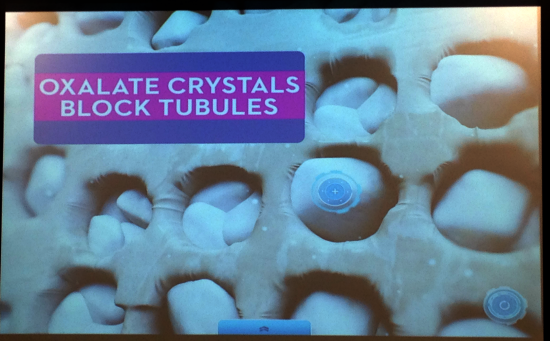This is a sponsored post written in partnership with One2One Network and Crest.
I have sensitive teeth, so anything cold against those sensitive spots sends instant electric shocks of pain deep into my teeth. It’s disruptive enough that I have learned coping behaviors to avoid the pain. I prefer to drink cold drinks with a straw, and I like my ice cream in a spoonable form, rather than an ice cream bar that I’d have to bite into.
And I’m not alone: it’s estimated that over 33 million households have dental hypersensitivity, with women tending to suffer from sensitive teeth more than men. That’s a lot of people having mild to severe pain due to everyday factors like eating cold, hot, or sweet foods, or even having cold air hit their teeth. Thankfully, my pain is still relatively mild compared to some. It’s not pleasant, but it’s also not long-lasting when it happens.
I recently had the chance to attend a meeting with Dr. Robert Gerlach, a Research Fellow with Proctor and Gamble, and Dr. Travis Stork, Emmy® nominated TV host of The Doctors and board-certified emergency medicine physician. They discussed the causes of dental hypersensitivity, the current products to treat it, and the latest product from Crest that promises to provide greater relief to hypersensitivity sufferers.
 I also marveled at how tall he is – he makes me look short!
I also marveled at how tall he is – he makes me look short!
While I had always thought that sensitive teeth were caused by enamel erosion, sensitivity is actually caused by microscopic holes in the teeth called dental tubules. These tubules are a natural part of the teeth, and by themselves they are harmless. The problem comes when those tubules become exposed, usually due to gum recession caused by a number of factors like gum disease or over-aggressive brushing. Those tiny holes are filled with fluid, and when something upsets the balance of that fluid – like temperature change – the fluid shifts and the nerve in the tooth is irritated.
Most products on the market to deal with sensitive teeth are toothpastes that use either potassium nitrate or stannous fluoride to reduce sensitivity. The problem with these products is that they either take weeks to begin working, or require a commitment to frequent use to sustain the results. Potassium nitrate toothpastes also tend to skimp out on effective cleaning, too, making them a poor choice for fighting plaque and gingivitis.
But Crest recently made a breakthrough in the topic of hypersensitivity with Crest Sensi-Stop Strips. These strips are small, flexible, semi-transparent strips that provide targeted, immediate and long-lasting tooth sensitivity relief.
Unlike the toothpaste remedies that require frequent use, these simple strips can be used at home, are easy to apply and can provide up to a month of pain relief in just 10 minutes. Did you catch that? A MONTH of being pain-free with a single, 10 minute application!
The strips are similar to whitening strips: the strip is coated in a gel that you apply directly to the affected teeth, right at the gum line. One Sensi-Stop Strip covers about three teeth. The gel contains oxalate, a naturally occurring substance that we consume every day. (For reference, Dr. Stork explained that an apple contains five times as much oxalate, although not concentrated into a targeted application like this.) The oxalate reacts with your teeth to form calcium oxalate crystals that block the tubules, preventing the fluid imbalance that causes pain.
 A slide from the presentation showing how the oxalate crystals block the tubules.
A slide from the presentation showing how the oxalate crystals block the tubules.
That sounds fantastic, but the proof is in the results, right? I tried the strips out for myself, using one on my top front teeth, where I have the greatest sensitivity with cold drinks. The strip is much smaller than a whitening strip, but covered three and a half of my teeth. The strip stayed in place without any trouble for the full 10 minutes. The gel had a slight taste to it, but wasn’t as strong as the whitening strips I’ve used in the past.
I was nervous to put it to the test, but after about 45 minutes I worked up the nerve to pour a glass of ice water. I lifted the glass to my lips, took a sip, and…nothing. It felt cold against my front teeth, and there was a bit of a tingle, but there was no shooting pain. There was still a dull ache from the teeth I didn’t treat (they aren’t nearly as sensitive), but the treated teeth were pain free. Wow. That was nearly a week ago, and so far I’m still pain-free on those teeth. It’s great to realize I can enjoy cold food and drinks again without fear of pain.
I’m impressed with this product. With Crest Sensi-Stop Strips, I can apply the treatment for my sensitive teeth exactly where it is needed, and the results are long-lasting. Of course, Dr. Stork also reminded us that the best way to prevent sensitivity, along with reducing your risks of cavities, gum disease and even heart disease, is by having a healthy mouth. Yes, even heart disease can be linked to gingivitis. He recommends a quality oral hygiene regimen, like Crest Pro-Health products which deliver comprehensive protection for your teeth and protects all the areas dentist check most: cavities, gingivitis, plaque, sensitivity, tartar, whitening and fresh breath.
I may have remembered to buy more floss after Dr. Stork’s talk. I don’t want more sensitivity due to receding gums, so I’m going to do my best to keep my teeth healthy. But I’m also thrilled that I can now treat the sensitivity I do have in a long-lasting manner with Crest Sensi-Stop Strips. If you’ve tried them, too, let me know how well they worked for you!
For more information, visit www.crestsensistop.com.


